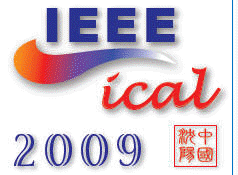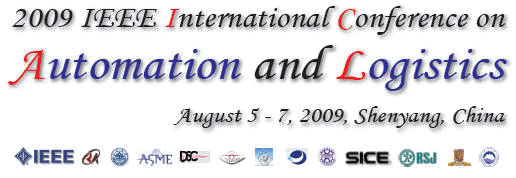



|
IEEE ICAL 2009 Plenary Talk #5 |
|
Department of Mechanical Engineering
Automatic Fabrication of Ultraprecision Microparts with Complicated Shape Abstract Ultraprecision micromachining is a key technology to realize the fabrication of microparts, microrobots, etc. Until now, etching and lithography based technologies are well known in the microfabrication fields, where such a material as silicon oxide is generally utilized. A large problem of these technologies is the difficulty of producing 3-dimensional shapes with inclined and sculptured surfaces. Utraprecision mechanical micromachining technology is utilized to meet the requirement, using a diamond cutting tool and an ultraprecision machine tool such as a turning lathe or a milling machine, especially with the multi-axis control machining function. Multi-axis control machine tools are one solution for improving productivity and accuracy, however, it is difficult to actually implement due to the interference between a cutting tool and a workpiece. Thus, the speech presents the current state of multi-axis control ultraprecision machine tools in Japan and a machined example of small workpieces with a complicated shape by making use of multi-axis control machining function. In order to set a cutting tool at an arbitrary position with an arbitrary attitude, 6 degrees of freedom are required, that is, 3 translational positioning mechanisms, X, Y, and Z, and 3 rotational positioning mechanisms, A, B, and C around each corresponding translational axis. Usually, conventional machine tools consist of 3 translational axes. On the contrary, multi-axis control machine tools stand for machine tools having more than 3 control axes. 5-axis control machine tools, the representative of multi-axis control ones, are usually equipped with 3 translational axes and 2 rotational axes, for example, X, Y, Z, A, and B. The axis C is used as the main spindle to rotate a diamond cutting tool or a workpiece so that high cutting speed can be realized. In case of 6-axis control machining, non-rotational diamond cutting tools are used, which enable the characteristic machining in spite of extremely low cutting speed. In general, ultraprecision machine tools have the translational positioning accuracy of 1 nm and the rotational one of 0.00001 degree. In Japan, there are currently more than 5 ultraprecision machine tool builders. Ultraprecision machine tools can be classified into several types in terms of driving mechanism of movement axes such as ball-screw, pneumatic/hydrostatic screw or linear drive, and supporting mechanism/bearing such as ball/roller bearing or pneumatic/hydrostatic bearing. In order to fabricate microparts with complicated shape, advanced CAM systems are essential. Such a CAM system can generate NC data for ultraprecision machine tools, based on 3-D CAD systems. In other words, it is impossible to create microparts with complicated shape without advanced CAM systems. As a representative
of complicated micromachines, there is a miropump useful for
water-cooling of heat generation from CPU, fuel-supplying to fuel cells,
blood circulation and so on. Let us introduce the machining of an
inducer of axial flow type micropump for blood circulation. Then,
several machined results by means of our own multi-axis control CAM
system for ultraprecision milling are presented. Biography Dr. Yoshimi TAKEUCHI
is a professor of the Department of Mechanical Engineering, Graduate
School of Engineering at Osaka University. He graduated from the
University of Tokyo in 1971, and received Master Degree in 1973 and
Doctor Degree in 1976 respectively. He was a visiting researcher of
Machine Tool Laboratory at Technical University of Aachen, Germany
during 1978.4 to 1979.3 under the support of Alexander von Humboldt
foundation. He is a fellow of CIRP, editor-in-chief of International
Journal of Automation Technology and International Journal of Precision
Engineering. He received Paper Awards from JSPE at 1997, 2000 and 2008,
and from JSME at 1998 and 2004, respectively. He is now a vice-president
of JSPE. His research interests are the development of ultraprecision
micromilling technology to make small size and complicated shape parts,
and the application of 3D-CAD/CAM to multi-axis control machining. |
Website updated on July 04, 2009. (c) IEEE ICAL 2009 conference.